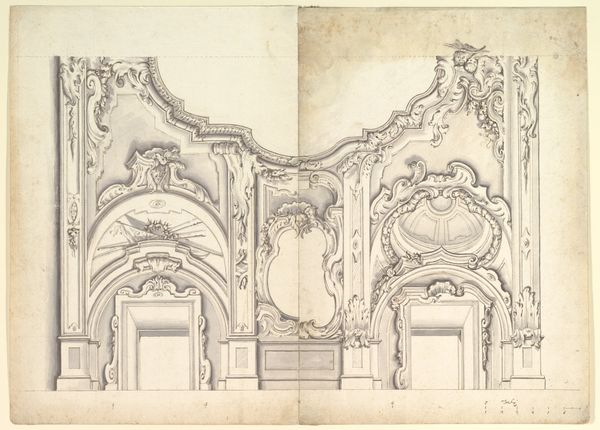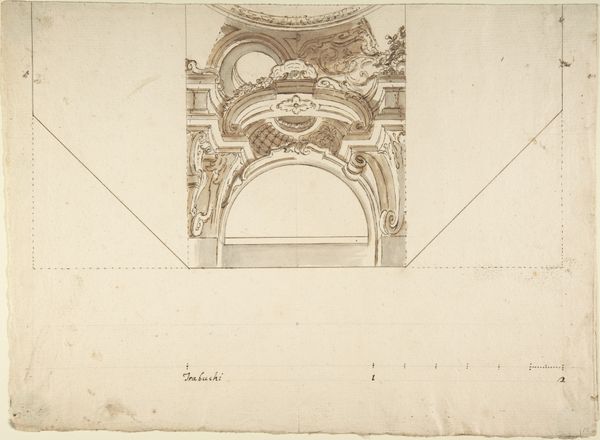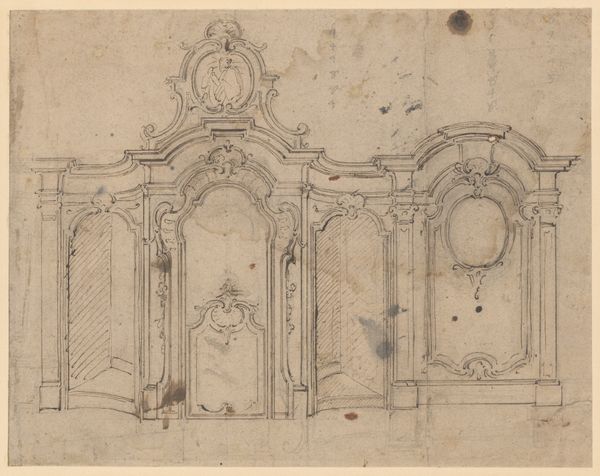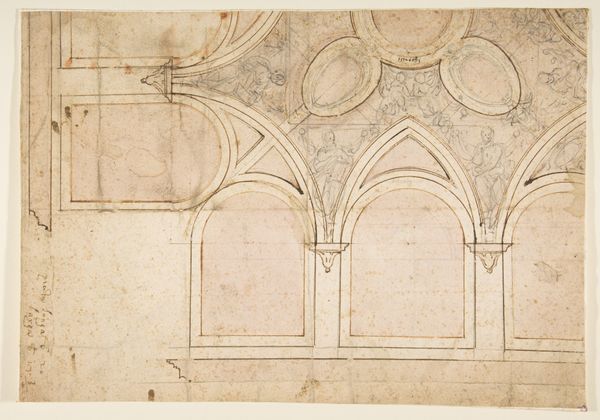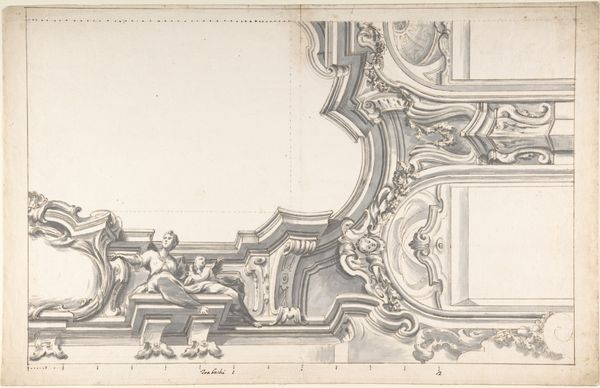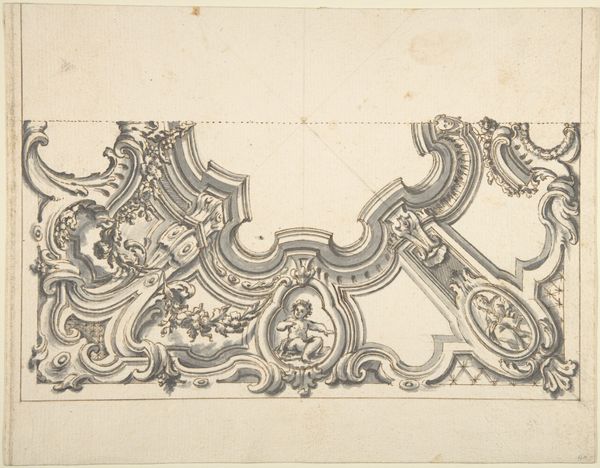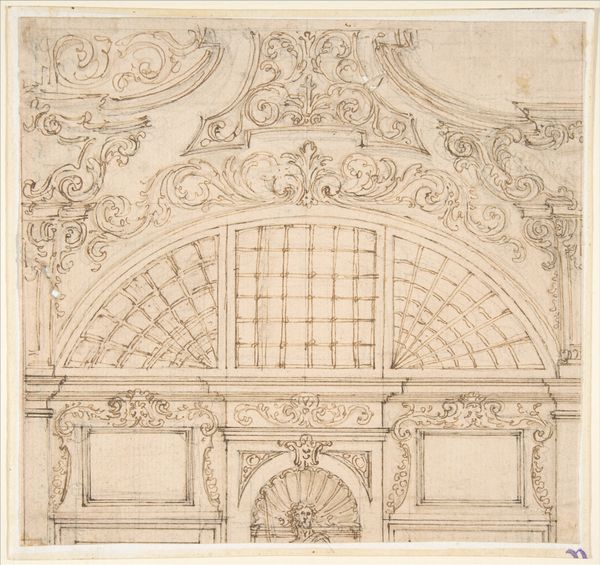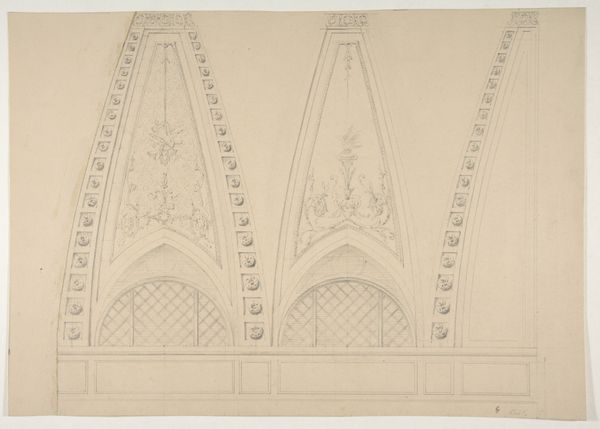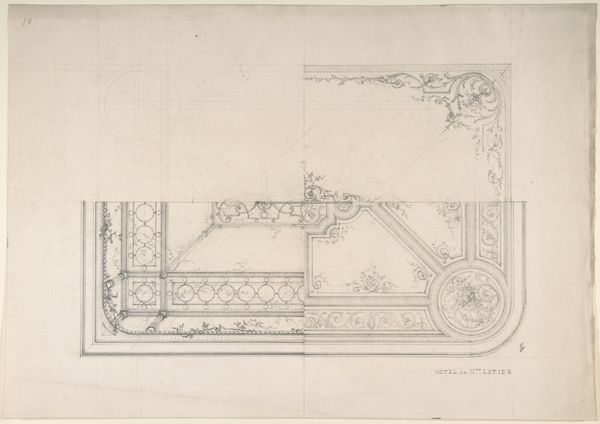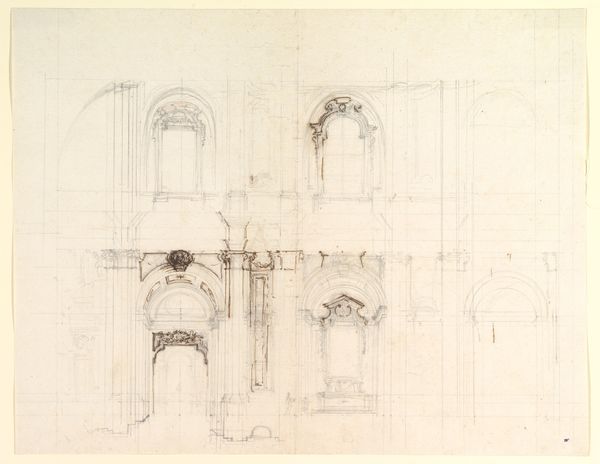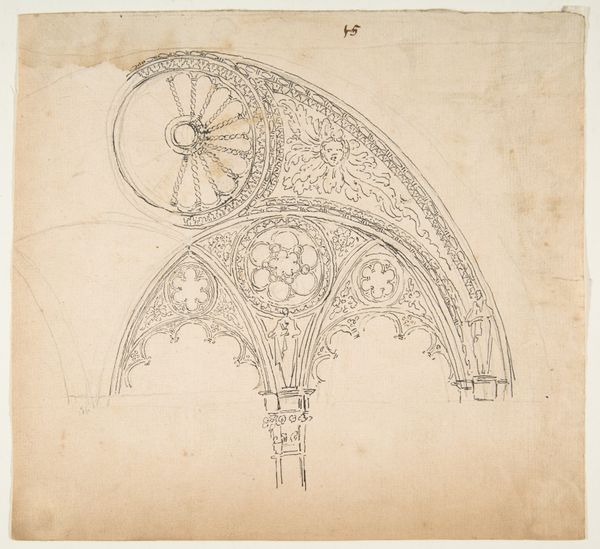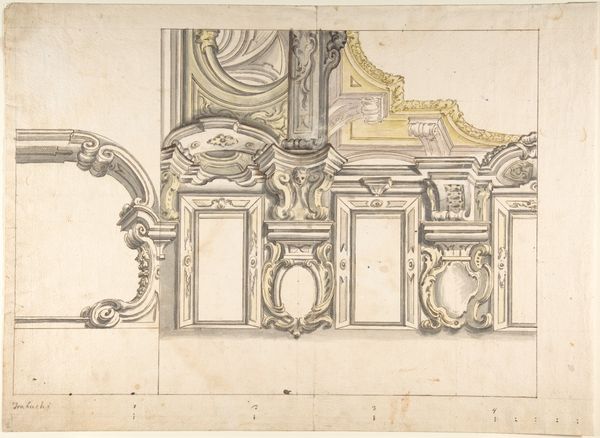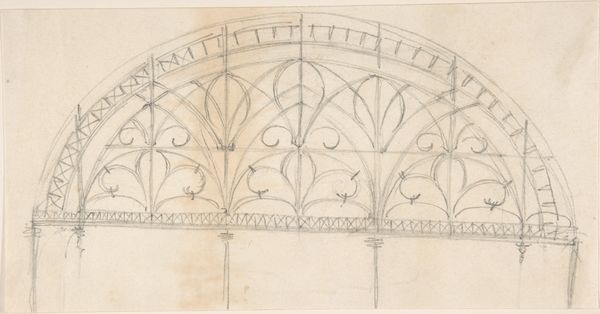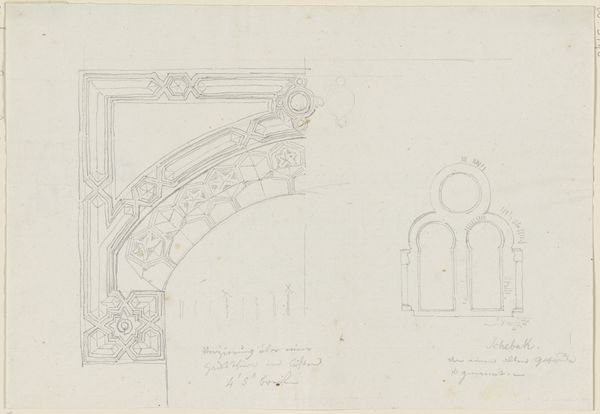
Three Designs for the Ornamentation of Vaults 1700 - 1780
0:00
0:00
drawing, tempera, print, etching, paper, ink, architecture
#
architectural sketch
#
drawing
#
baroque
#
tempera
# print
#
etching
#
landscape
#
etching
#
paper
#
ink
#
watercolor
#
architecture
Dimensions: 14 5/16 x 20 3/16 in. (36.4 x 51.2 cm)
Copyright: Public Domain
Curator: I'm immediately struck by the incompleteness of the forms. The rigid outlines that surround the incredibly intricate architectural details hint at lost possibilities. It's a compelling visual tension. Editor: That's interesting. I see that tension too. This is "Three Designs for the Ornamentation of Vaults," dating from sometime between 1700 and 1780, created by an anonymous artist. It employs etching, tempera, ink and watercolor on paper to showcase Baroque architectural design. Seeing these designs displayed today in the Met is particularly compelling when we consider questions of power, taste, and representation tied to architectural spaces. Curator: Precisely. Think about the architectural ambitions of the Baroque period – projecting power through visual excess, all tied, undeniably, to patriarchal and colonial projects. This drawing is not just an aesthetic exercise but an assertion of control through constructed space. Editor: It makes me consider who would have originally viewed and utilized such a design. Was this created for a patron? And how did its existence affirm, or perhaps challenge, existing social hierarchies of the era? The public accessibility of architecture contrasts strangely with this intimate, preparatory artwork. Curator: These are critical questions to raise, considering the societal functions of ornamentation during this time. Architectural design reinforced hierarchies of wealth and influence – consider its manifestation within royal residences. How accessible or exclusionary were the actual structures versus this kind of visual representation of those structures? Editor: Absolutely. Also, thinking of this architectural rendering today, in the Met, asks who benefits most now from the historical echoes of baroque sensibilities embedded within Western museum architecture, which evolved from these visual representations of buildings to the institutional buildings themselves? Curator: The museum, thus, inadvertently becomes both an exhibitor of art and an artifact in and of itself, right? That intersection offers a potent avenue to question existing structures and power dynamics through visual narratives. Editor: I concur completely. What this artwork teaches us extends far beyond technique or historical value; it is a continuous commentary about control, accessibility, and the intersection of architectural spaces. Curator: Indeed; contemplating how architecture designs not just space, but also behavior within that space is essential when approaching works like this.
Comments
No comments
Be the first to comment and join the conversation on the ultimate creative platform.
